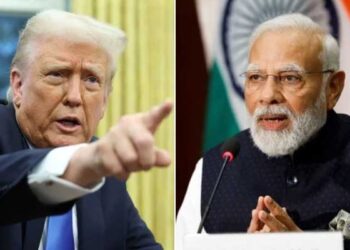India’s Protective Stance on Car Imports
India has long maintained a highly protective policy towards its domestic automotive industry. This stance is evident in the low percentage of car imports into the country and the astronomical tariffs that govern them. In the financial year 2023 to 2024, car imports constituted a mere 0.1% of India’s total imports. This figure underscores the government’s intent to bolster and protect local manufacturers amid shifting global trade dynamics.
The Current Tariff Landscape
India is noted for having one of the highest car import tariffs in the world, averaging around 106%. This hefty tariff serves as a barrier to foreign manufacturers seeking to enter the Indian market. The aim is to support local automakers, ensuring they have a competitive edge against international players. Despite pressures for reform, the Indian government is contemplating a gradual reduction of tariffs to 10%. However, this potential move has sparked backlash from domestic car manufacturers, who argue for maintaining a higher tariff rate of at least 30%.
Key Import Statistics
Financial Year 2023/2024
- Total Cars Imported: Approximately $700 million.
- Percentage of Total Imports: 0.1%.
These figures from the Department of Commerce highlight India’s limited reliance on imported cars, emphasizing the nation’s commitment to nurturing local production.
Major Sources of Car Imports
India’s principal sources for car imports in the fiscal year 2023/2024 were Germany and the UK, with these two countries collectively accounting for 56% of the market. This is particularly significant as it illustrates the reliance on traditional automotive powerhouses for car imports. Interestingly, the U.S. emerged as the fourth-largest source of car imports, contributing $52.4 million to the Indian market.
Growth Trends in Imports
The growth in car imports has been notable, especially from the UK and China, both of which saw an increase exceeding 100% between the financial years 2022/2023 and 2023/2024. Such developments could hint at an evolving landscape in Indian automotive trade, potentially influenced by changing tariffs and market conditions.
Potential Impact of Tariff Reductions
Should the Indian government proceed with lowering tariffs, it may open the door for European automakers such as Volkswagen, Mercedes-Benz, and BMW to increase their market presence in India. This shift in policy could stimulate competition within the domestic market, ultimately providing consumers with more choices.
Responses from Indian Automakers
Despite the potential benefits for foreign manufacturers, Indian carmakers have expressed strong reservations regarding tariff reductions. They contend that a protective tariff structure is essential for the sustainability of the domestic automotive industry, particularly as the market navigates the complexities of international trade.
Conclusion
The evolving landscape of India’s automotive import tariffs presents both opportunities and challenges. With ongoing discussions around tariff reductions, the dynamics of the global automotive market may influence decisions made by policymakers in New Delhi. As the trade relationship between India and the European Union develops, the balance between protecting domestic industries and embracing global competition remains a critical point of negotiation.






